One of the few species of spider that are popularly kept as pets, the wolf spider is usually either loved or hated. Unfortunately, having one of these hairy eight-legged critters loose in your home is usually an unwelcome event.
Not only are they fairly large, but their jumping ability and furry appearance result in almost as many standing-on-chair incidents as mice and rats. Even worse, these hairy spiders are so fast that it’s often difficult to find ways to catch them.
So how do you know if that’s really a wolf spider running around your home or garden? How do you get rid of wolf spiders that wander indoors, and should you?
Identifying Wolf Spiders
There are actually 125 species of wolf spider in the US (and approximately 2,300 worldwide). Thankfully, they all share some common characteristics.
See Also: 9 Fascinating Facts about Wolf Spiders
What Do Wolf Spiders Look Like?
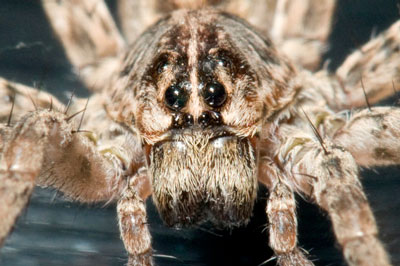
Speaking of eyes, they have two large eyes with two smaller ones above and four below. For those not counting, that eight eyes that all shine like cat’s eyes.
One of the most notable features is that most female wolf spiders carry their egg sacs. She attaches to their spinnerets, holding the sac in a manner that prevents damage. A few species hide their sacs underground.
From birth until their first molting, wolf spiderlings will ride on top of their mother’s abdomen, a sign that makes identification easy.
How Big Can a Wolf Spider Get?
These are some of the larger spiders you’ll run into. The average female wolf spider can have a body that measures 1-3/8 inches. Add the legs and that becomes an overall length of up to four inches for the massive Carolina wolf spider!
Males are much smaller with a body length that measures about 3/4 inch.
What Do Wolf Spiders Eat?
Wolf spiders will eat just about any type of insect including grasshoppers, flies, lovebugs, ants, earwigs, and even roaches. While ground-dwelling insects are more common prey, the hunting prowess of these spiders can let them also snag resting flying insects.
After locating their victim, these agile hunters quickly pounce on them before using their powerful jaws to bite the unlucky victim. They never have a problem finding food to eat in almost any environment.
Read Also: What Do Earwigs Eat?
Wolf Spider Habitat
Unlike web-building spiders, wolf spiders live for the hunt. They don’t spin webs so there’s no clear sign you have one. Some species create burrows, but most are nomadic.
When in your home, they’ll tend to stay near doors, windows, wall cracks, and plants. They also prefer to stay close to the ground while in search of insects. Despite this, a mother spider’s brood tend to disperse aerially.
They’re one of the most common spiders around the house in many regions but prefer warmer climates overall. However, you’ll find at least one species that likes to live in all but the coldest extremes of the globe.
See also: Where Do Spiders Go in the Winter?
Wolf Spider Homes
Remember how we just said most wolf spiders prefer to roam? Well there are many exceptions, and their living spaces are worth discussion. These aren’t your average spider, and lycosids are insanely intelligent.
For example, some burrowing species actually build fences around the entrance. The little stick structures help to keep potential predators out. The gray wolf (Dingosa simsoni) spider builds a burrow with a circular trapdoor for added security when they’re home.
In arid regions, they may build plugs out of pebbles and other debris. While other burrows get flooded, theirs remain dry. Alternatively, they might construct watchtowers to provide elevation from the seasonal flooding.
Various natural habitats have led to a wide range of adaptations such as these. Unfortunately for humans, the ingenuity of these ground spiders continues into manmade structures.
Wolf Spider Benefits
While you may not want to open your doors to a group of wolf spiders, having one or two in your garden or yard can be quite beneficial. These spiders are naturally shy around humans and will usually run or hop away unless cornered.
As they’re ground dwellers and rarely climb, they make for a welcome defense against a wide variety of garden pests, from grasshoppers to caterpillars. Of course, spotting one may cause some panic, but these critters are a lot more effective than most residual pesticides and will generally stay out of your way.
Health Risks
As with most spiders, there is a lot of debate on how dangerous a wolf spider is. On one hand, they help control insects that might pose a risk of disease. On the other, there is a lot of confusion about whether wolf spiders are venomous. Considering they’re a popular pet, it’s hard to think they can cause harm to humans.
Are Wolf Spiders Poisonous?
Yes, wolf spiders are technically venomous,. However, it was discovered in the early 1990s that their venom produced no necrotic (where the flesh dies) effects in humans.
The use of anti-venom for lycosid bites was thus stopped at this time. Previous reports of necrosis from wolf spider bites in South America were later attributed to other genera of spiders. Considering how many species resemble wolf spiders (such as the brown recluse), this revelation isn’t surprising.
What Happens When a Wolf Spider Bites You?
Wolf spider bites are painful and may produce some temporary swelling or itchiness. The pain itself generally lasts about ten minutes. It’s actually caused by the body’s natural reactions to a puncture, not the venom.
A bite wound’s symptoms can remain visible up to a few days. In healthy adult humans, this is the extent of the damage. However, in pets, children, and immuno-compromised adults, the effects can be worse. In these cases, head to the emergency room or vet. They have effective treatments that can cut risks to zero if applied early.
Safely Handling Pet Wolf Spiders
On a related note, lycosids tend to be somewhat shy. Pet wolf spiders might hide under leaf debris or in shelters you’ve added to their home. Since they can see well, they know the difference between a cricket and a finger. You can safely handle one if you’re slow and gentle.
However, sudden moves or rough handling can and do result in getting bitten. Note that we don’t advise trying to handle a wild specimen under any circumstance.
Stand-Out Species and Common Comparisons
The Lycosidae family is pretty big, but there are a couple species which stand out and deserve special mention. There are also a few common spider species that easily get confused with lycosids.
Carolina Wolf Spider (Hogna carolinensis)
This giant wolf spider is not only the largest in the US, but South Carolina’s official state spider (making it the first spider to receive such recognition in the country). They have an estimated habitat range spanning ten states and their coloration provides camouflage in their natural hunting grounds. They are very dark or black in color.
Kaua’i Cave Spider (Adelocosa anops)
Native to Hawai’i’s Kaua’i Island, these cave dwellers deserve special mention due to their lack of eyes. The reddish-brown hunters can measure up to 3/4″ and are locally referred to as Pe’e Pe’e Maka ‘Ole (or “No-eyed, big eyed spider).
The chances of finding one of these living in your home is extremely unlikely, as both the species and its primary prey (the Kaua’i cave amphipod) are sadly on the endangered list.
Texas Wolf Spider (Rabidosa rabida)
Also known as the rabid wolf spider, this species is actually quite harmless. They frequently camouflage themselves against bark when hunting, and have a complex mating dance which does not end in intercourse, but instead the male deposits his sperm in a web sac that the female collects and attaches to her body.
While Texas wolf spiders like to live in woods and cotton fields, these spiders are also frequent home invaders. This is simply due to their curiosity encouraging them to venture indoors.
Wolf Spiders vs Brown Recluse
While a male wolf spider measures about the same size as the deadly brown recluse and shares a similar color, there are two key features to the latter that make identification easy.
Brown recluse spiders have only six eyes, set in three pairs horizontally instead of a wolf’s eight reflective eyes in three rows. Also, there is a telltale dark violin-shaped marking on the head and back of the brown recluse, with the neck of the violin pointing to the abdomen.
Wolf Spiders vs Grass Spiders
Grass spiders are often mistaken for wolf spiders due to their similar markings, but they have some very different features.
The biggest difference is that grass spiders build webs. These webs resemble funnels, giving this spider the nickname of “funnel spider”. They also have very prominent spinnerets which can be seen from most angles.
Like the wolf spider, grass spiders are harmless to humans and are actually unable to bite people due to their tiny chelicerae (fangs).
Getting Rid of Wolf Spiders
Wolf spiders are beneficial and mostly harmless. However, that doesn’t mean you want them in your home. We don’t recommend the use of lethal methods but shall include them here for those suffering larger wolf spier infestations.
Note that these methods can get rid of any current infestation, but generally won’t prevent against future invasions.
Home Remedies
Getting rid of any pest is usually a balance between effectiveness and family safety. Unlike most small critters, the natural methods used against wolf spiders are just as effective as chemical treatments without the risk of creating chemical resistance in survivors.
Glue Strips
Surprisingly effective, glue traps can be placed along the floor or ledges where wolf spiders have been spotted. These traps can be of any variety, including the common fly strip. While usually lethal, it’s possible to use water-soluble glues to save the spider (if you notice them in time).
When your unwanted spider comes out, she will get trapped on the glue. An added bonus to this is that sticky traps also catch any nearby insects, providing free bait. Glue strip traps should be placed in the corners of the garage, basement, or attic, and in closets or behind furniture.
Relocation
Wolf spiders don’t invade homes or crawl spaces maliciously. They simply go wherever there’s food, much as a lion in the African savannas might migrate alongside its prey. Thus, an individual brave enough to catch a live spider indoors can simply relocate her to a new home away from yours.
You will have to be quick to catch the spider in a container. However, once trapped, you can slip a piece of cardboard or other flat, sturdy item underneath. Just remember, the spider can simply jump out if you uncover the container for even a moment.
Woods and fields are perfect relocation targets, as wolf spiders will have plenty of things to eat. There are also wood and leaf piles to hide in, so she’ll be quite happy.
Kill Methods
As mentioned, we’re not fans of killing critters if they’re beneficial or harmless. But when you need to resort to violence, these are some great solutions.
Boric Acid
This is a chemical commonly used for spider control and pest control in general. Sprinkling it along the edges of walls creates a very effective barrier against most tiny pests. Humco boric acid powder is a popular and trusted brand.
When a spider (or other mini-pest) walks over the acid, it causes numerous cuts and gashes. The pest will not only lose bodily fluids from these wounds, but will get on its legs and ingest the chemical the next time it grooms, poisoning it.
Note that this product isn’t safe around kids or pets, although it’s perfectly harmless to adults.
Hexa-Hydroxyl
This is a natural pesticide ingredient which is a safe treatment option around both humans and pets. Based on a blend of various plant oils, Hexa-Hydroxyl targets certain neural pathways that don’t exist in humans and other mammals, but can kill spiders and other tiny critters efficiently.
Pesticides
A large number of pesticides and arachnicides are available that target spiders. In most cases, these will also kill wolf spiders, although there are some indoor products available that specifically target lycosids.
Products which leave a residue will reduce the risk of future spiders for a time, but are less safe around children and pets. Before using a spray indoors, always make sure it’s safe.
One particular type of outdoor insecticide works extremely well against lycosids and almost 100 other pests. Tempo SC Ultra comes in a super concentrated 8 oz bottle that makes up to 30 gallons, so it will last you a long time or can cover a large yard. Demon Max is another good spider killer. Spray these pesticides on the ground, forming an anti-pest barrier.
Most arachnids are known for crawling up vertical surfaces or using web strands (think Spider-Man) and thus never come in contact with the pesticide barrier. Wolf spiders, however, scurry along the ground and will almost always run into the insecticide residue.
Professional Extermination Services
In the event of a large infestation, you may need to hire an exterminator. Most any professional extermination service will first assess the situation and then develop a cost-effective plan of action based upon their findings.
Treatment may include additional extermination techniques if a food source (such as an insect infestation) was discovered. Some type of commercial pesticide spray is usually used when a professional service is used.
Keeping Wolf Spiders Away
Once you’ve managed to evict these critters, it’s a good idea to make sure they don’t come back. This involves removing attractions and performing exclusionary tactics.
What Attracts Wolf Spiders in the House?
It’s pretty difficult to keep a wolf spider from wandering into your yard or garden, but there are some basic prevention tips you can use to keep them out of your home.
The number of wolf spiders invading homes spiked in 2012, due to the extremely hot weather. This number will likely continue to increase annually until weather conditions begin calming down to the levels they were in the 20th century.
Note that some of these methods will also help against other critters and may even save a little on your HVAC bills in the long run.
Food
Wolf spiders don’t enter your home because they like it better than their own burrows. They tend to be shy, and usually only enter a home when they find a potential food source which attracts them. Getting rid of these sources is the first step to prevention.
This is also why you will usually find them near outer walls and in humid areas of the house. Proper pest control will greatly reduce the risk of them entering (or remaining) in your house. Simply remove the food source and you lessen the chance of having wolf spiders.
Regularly clean and vacuum your floors and carpet since crumbs can attract many insects. Also be sure to use sealable containers for any food you plan to leave out.
Outdoor Lights
While lycosids aren’t necessarily attracted to your home’s exterior lights, these do attract potential meals such as moths and flies. Try to keep these turned off at night or switch to sodium vapor lights which are less likely to attract bugs. Otherwise, a hungry spider may accidentally wander inside while feasting.
Shelter from Extreme Weather
The number of wolf spiders invading homes spiked in 2012, due to the extremely hot weather. This number will likely continue to increase annually until weather conditions begin calming down to the levels they were in the 20th century.
Note that some of these methods will also help against other critters and may even save a little on your HVAC bills in the long run.
Exclusionary Tactics
Exclusionary tactics help keep your entire home safe from all sorts of critters. Be warned, this isn’t a one-and-done solution, and you should check your home every two or three years to ensure nothing’s bypassed your security.
Entry Points
Locate and seal any external cracks or holes on your home, so the spider can’t squeeze its way in. Using screens on doors and windows will also make crawling into your home difficult for these little guys.
Wolf spiders don’t like to climb, so make sure your foundation is free of cracks or small holes. Many ground pests are more likely to enter the house from a low elevation, such as crawl spaces or basements.
Shelter
You’ll also want to remove any vegetation, firewood, or yard debris such as leaf piles away from your home. Various materials and debris near your walls may offer them shelter from predators and give pests a higher chance of stepping into your home. So keep a clean perimeter of at least six inches around your home at all times.
- How to Get Rid of Hawks - March 8, 2024
- How to Get Rid of Pill Bugs (Rolly Pollies) - March 1, 2024
- How to Get Rid of Groundhogs (Woodchucks) - February 5, 2024

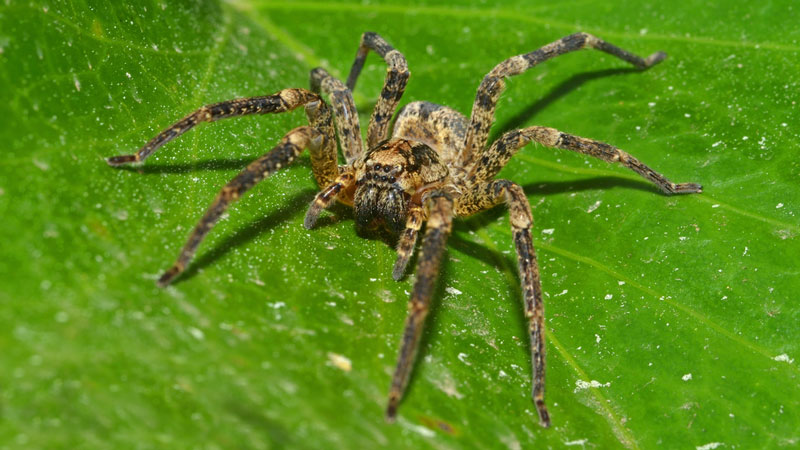

 Just tell me how to get rid of ’em.
Just tell me how to get rid of ’em.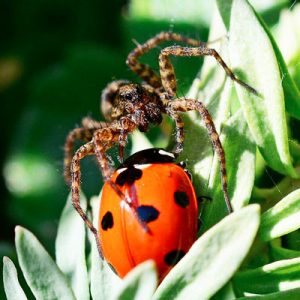
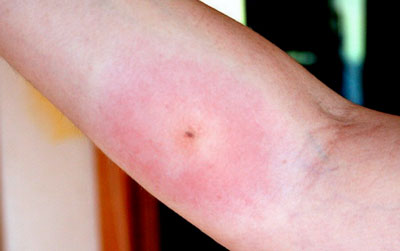
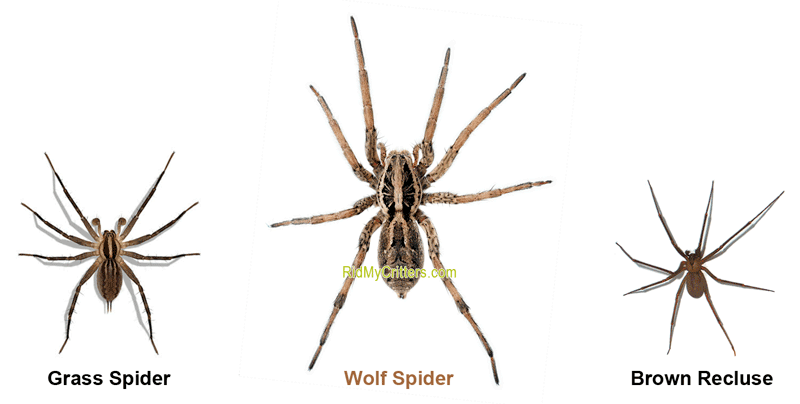
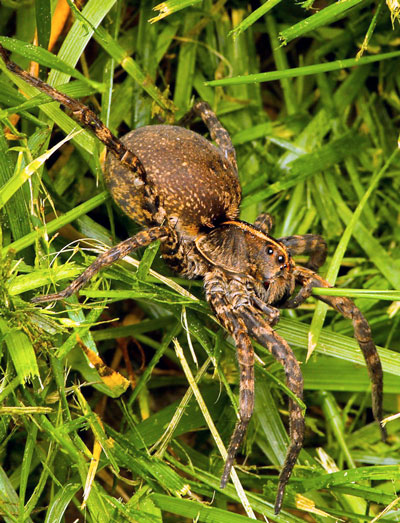
Super informative! Just what i needed, thank you!
Actually its not. Harmless, natural pest exterminators are not a nuisance. Leave them alone. Some good information- you have pests in your house. A few spiders will handle this problem. Its a better solution than exterminators toxic poisons. Use pinterest for food recipes, not how to be out of touch with nature.
Best article I’ve found. Thank you!
Thank you.
This is cool, but wolf spiders are benefical organisms in all aspects. They feed on other arthropods that are really a problem! Spiders are our friends, never our enemies!
I agree these spiders are beneficial but I have found over 10 in my home in the passed 2 weeks. One crawling up my bed, so they do crawl vertically if it is easy enough. Very large and quick. I have also seen younger ones lurking in the cracks of my crappy rubber wall siding the landlord put up on in every room! I am calling an exterminator tomorrow!!!
One of these little f****** bit me in my sleep a few nights ago and it was itchy and hot. While i could not find it that night (I did not sleep anymore after I could not find it) it showed it’s ugly face a few days later again…IN MY BED and I sprayed it with oxy clean until it stopped moving (THEY ARE FAST!!!) and then disposed of it…
Yeah, this is not somewhere I’d like to see one of them nor would I expect one to be there. Glad you eventually found the bugger.
One wandered into my house 2 days ago and I thought he left since he was right by the front door. He wasn’t moving much. He let me sweep and mop right beneath him while he chilled on the baseboards. He never even flinched or acted scared or aggressive. So he vanished when we were asleep on night one and we didn’t see him again until night 3. He was in my kitchen out in the open and not moving at all. My son trapped him with a cup and he started slowly trying to get out of the cup and my son chickened out of picking him up and putting him outside. I ended up having to knock the cup over and release him because I didn’t want to kill him after how nice he had been. We thought he was dead because his legs were all curled up. We let him lay there a while to make sure and sure enough the little critter got up and crawled slowly a few feet and has been sitting there ever since with his legs stretched back out. Is he dying or what? Why is walking slowly when they are known to go so fast? I’ve never seen a spider like this one act so strange. One more note, he only moves a few steps whenever I, the mom who is terrified of spiders, gets closer to him. My kids can walk up and nearly touch it and it won’t move. Just when I am near. And it will walk towards me and then stops and stays put for a long time. Like hours.
So these spiders have been a problem if you will, lately. I’ve killed 5 within the last 2 days in my room alone (which is located in the basement unfortunately) and have seen plenty of others wondering around. My fear is that one my climb onto my bed or hide in my clothing. Is there a way to deter them away from my room?
Personally, all spiders terrify me lol!! But with spiders like these, they breed in the fall. So the male come out in force looking for females to “hang out with”. I live in a 120 year old house with my laundry in the basement and absolutely HATE doing laundry down there. I am for sure thankful for the info in this article and will absolutely try some of the suggestions!! Thank you!
My house is infested with wolf spiders. I find at least 3-4 a day. They are all over the front of my house hiding in the siding. Getting on my front porch. I have been catching them and putting them outside for the most part. Little worried as I have a small dog and read article stating they can be toxic to dogs resulting in allergic reactions, seizures shock or death if dog is bitten. Guess they do not affect cats. I have cats and birds. You would think they would get the spiders. But nope they leave them for me. Any suggestions for a natural way to rid of them? Tried peppermint oil, lavender oil . Thanks
This is the time of year when it’s very common to see wolf spiders as they look for a warmer area. If you are opposed to chemicals (Ortho Home Defense works well and is safe for pets), sticky traps can work very well. Terro spider and insect traps are the most well known.